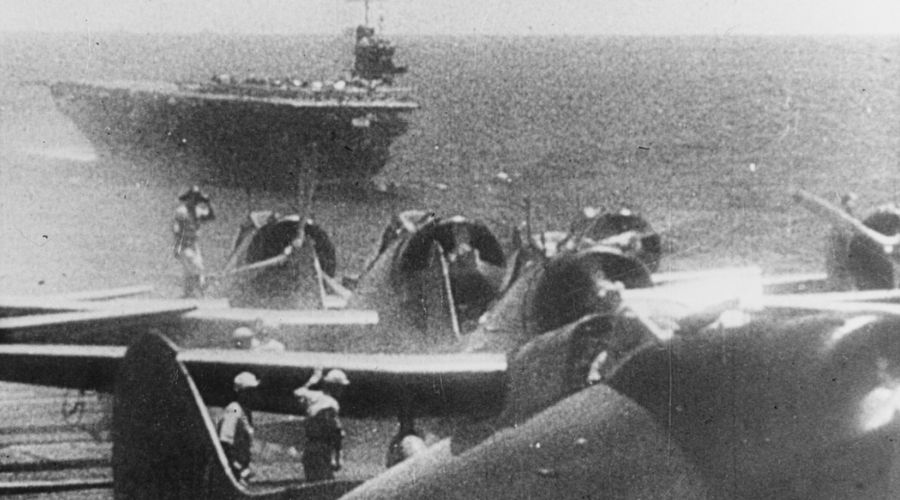Our Newest Acquisition
9/26/2022
Our Newest
Acquisition is Here
The Val has arrived!
For the first time anywhere in the country, Pearl Harbor Aviation Museum will display all three aircraft used by the Japanese Navy to attack Pearl Harbor and other bases on Oahu – the Zero, Kate and Val.
Val In Flight
After a long-awaited arrival, the Museum’s newest acquisition, a rare WWII Val Dive Bomber aircraft, has arrived here on Ford Island. Completing its 3-month long journey to Pearl Harbor Aviation Museum. This September our dedicated restoration team worked to safely unload the Val from a Matson shipping container into its new home,
Historic Hangar 79.

World War II era, Japanese, Aichi D3A dive bombers are few and very hard to find these days. Of the 1,495 D3As built in five versions, only a handful have survived destruction in combat or the inevitable ravages of time and nature. For these reasons and the significant historical value in seizing an opportunity to acquire and assemble a visually recognizable, Pacific Theatre era Val, Pearl Harbor Aviation Museum is extremely pleased to announce our latest acquisition and restoration project.
The aircraft will be assembled from the recovered sections of at least two, and perhaps more, Vals abandoned in shrapnel-riddled revetments beside a heavily bombed airstrip. Stay tuned for our future reports on the in-depth details about this Vals specific series of design, manufacture, powerplant, and much more.
The infamous Zero, single seat fighter, flew Combat Air Patrol protecting their bombers and strafing ground targets. The dual-purpose Kate, a three-man crew, delivered either a single torpedo or a single, high-altitude, armor piercing bomb. Both aircraft could carry lighter bombs on their wing racks.
The Vals were to attack a second target the array of PBY aircraft on Ford Island to eliminate the possibility of these long-range search and report aircraft from discovering the withdrawing Japanese fleet.

Left: Japanese Navy Zero fighter take off from aircraft carrier. Right: Japanese Navy attack plane Kate take off in route to Pearl Harbor.
The Val, with a two-man crew consisting of a pilot and a rear-facing gunner, was an extremely accurate dive-bomber. During the attack on Pearl Harbor, the Zeros were assigned a medium to high-level patrol mission anticipating U.S. fighter aircraft resistance. The Zeros also had protective escort responsibility of the bombers’ return to their carriers.
The Torpedo version of the Kate was to attack Battleship Row first, allowing for the slow-moving direct assault on the ships to occur as early in the attack as possible. The Vals were to attack a second target the array of PBY aircraft on Ford Island to eliminate the possibility of these long-range search and report aircraft from discovering the withdrawing Japanese fleet. The Vals also targeted long-range bombers and all other aircraft and hangars for the same reason. The third attack mission consisted of Kates with high-altitude, armor piercing bombs targeting the battleships on the inside, somewhat protected, mooring of the double row of ships in Battleship Row.

Japanese Navy Bomber (Val) prepares to take off from aircraft carrier on morning of December 7, 1941.
Now that the Val is onsite, the real work begins, our restoration team will start to repair the Val to make it display ready and reunite the three aircraft together to share the stories of Pearl Harbor. Your continued support and generous donations help to preserve artifacts like the Val and ensure that we honor those who have defended our freedom so we might educate and inspire
future generations.
